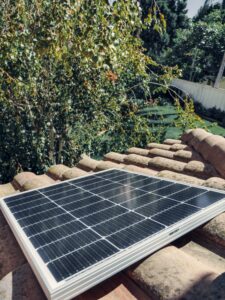
Home solar systems are an excellent way to reduce your energy bills and protect the environment. Furthermore, they can increase your home’s resale value.
The cost of a home solar system is determined by several factors, such as the quantity and type of panels you select. Installation, batteries and monitoring fees must also be factored in.
Cost of Panels
Solar panel costs have continued to decrease due to new technologies that maximize power production. In fact, residential solar panels now cost the lowest levels in 30 years!
The cost of solar panels varies based on your home’s size, location and energy needs. Installation charges also differ based on the type of panel you select.
Monocrystalline panels are the most energy-efficient and long-lasting, though they’re more costly than polycrystalline options. Other viable choices include thin film and bi-facial (also referred to as PERC) panels.
Homeowners typically pay a lump sum upfront for their solar system, which is then repaid over time through savings on energy bills and federal tax credits. Unfortunately, paying cash may not always be feasible for everyone.
Cost of Installation
The cost of installing a home solar system is determined by several factors, such as the type and wattage of panels you select, your location, and incentives available in your area. It also depends on whether or not you wish to be connected to the electric grid or go off-grid.
Installing a solar system can vary considerably by region, though much of this cost-saving is due to incentives offered by utilities or local governments. Selecting an ideal location is key in order for your system to be cost-effective and provide an impressive return on investment.
Installing a home solar system is an energy-saving way to save money on utility bills and boost the resale value of your property. There are various financing options for such systems, such as an upfront cash payment or loan.
Cost of Batteries
Battery storage is another option to consider when installing a solar array at home. Although adding this layer of complexity adds another level to the process, for some households it could prove an advantageous investment.
Batteries can store a homeowner’s excess solar production from the sun and provide backup power if the grid goes down. Through net energy metering, this extra energy is exported back to the grid, allowing homeowners to accumulate credits that they can use towards offsetting their electricity bill costs.
Battery storage can help reduce utility bills during peak hours, when energy companies charge the highest rates. By storing power during these times, you can take advantage of tariff arbitrage and save money.
Battery prices can vary significantly and depend on factors like battery chemistry, quality, and other features. To get an accurate price for each battery, you should get quotes from multiple manufacturers and compare what each includes in their price.
Cost of Monitoring
If you want to maximize the efficiency of your home solar system, monitoring energy production is a wise idea. Doing this prevents energy wastage and unexpected high bills.
Monitoring systems utilize both hardware and software to collect data about your solar panels, inverters, and battery backup. Depending on which model you select, this feedback can be delivered through a smartphone app or web portal.
Tracking your solar panel output is one popular method. Installing a monitor at each panel site allows you to view both the power generated by your panels as well as other weather and environmental data.
Some of these devices come equipped with cellular capabilities that enable you to monitor your system remotely, even without an internet connection. Alternatively, some systems come with their own power optimizers which don’t need any internet connection for data transmission.